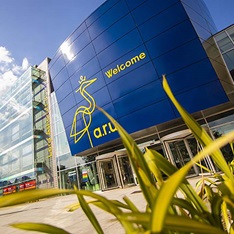Anglia Ruskin University’s New Food Outlets Prioritize Sustainability
Anglia Ruskin University (ARU) has unveiled a bright new look to its main cafes in Cambridge and Chelmsford, which are open to the public, with the changes also helping improve the university’s environmental footprint.
The remodelling began this summer with the removal of older, less efficient kitchen appliances. ARU partnered with Ramco, which specialises in refurbishing and finding new homes for old equipment.
Items such as hotplates and heat lamps are now independently controlled, to better manage energy use, and the previous open-plan layout has been changed to a kiosk design. This means the catering team can tailor the areas being used to meet demand, reducing the number of appliances powered throughout the day.
The redesigned seating areas have created inviting social spaces, with the aim of encouraging students and staff to eat in rather than takeaway, therefore reducing the amount of disposable packaging being used.
And the changes also include exciting new menus, which now feature a wider range of vegetarian options, including a £1 plant-based meal on offer each day.
A study published earlier this year indicated that cutting down our meat consumption could have the same environmental benefit as removing 8 million cars from our roads. ARU is targeting a 50% reduction in the amount of meat being sold in its catering outlets by 2026.
Susie Cullen, Head of Catering, Hospitality and Events at Anglia Ruskin University, said:
“ARU is committed to ensuring that every part of the university is operating as sustainably as possible, including our food outlets.
“This large-scale refurbishment of our catering facilities has allowed us to make a number of significant changes. Working with Ramco has meant we were able to implement an environmentally friendly disposal solution that gave our unwanted kitchen equipment a second life, helping to reduce waste.
“ARU has pledged to become a zero-carbon university by 2045 and making improvements to every aspect of our catering – whether through the energy efficiency of our equipment, reducing the carbon footprint of our menus, or encouraging people to eat in rather than take away – can help us achieve this goal.”

